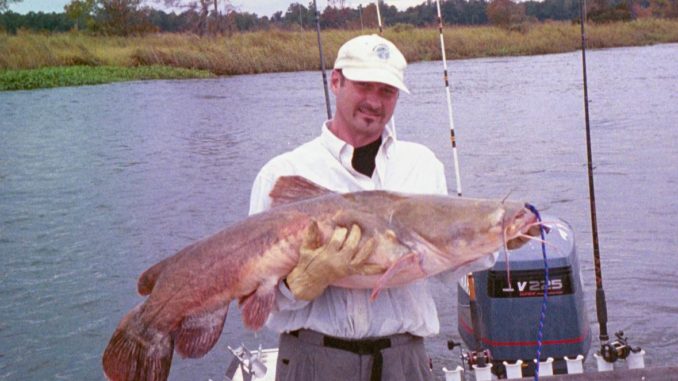
Like clockwork, catfishing enthusiast Lance Larsen of Anderson packs his gear and heads for Santee Cooper every mid-October. But he concentrates his efforts not on the main lakes of Marion and Moultrie, but rather along the tidal rivers of the Santee basin — waters such as the Cooper and Santee, among others.
It’s difficult to argue with Larsen’s success. Two years ago on his October pilgrimage, he caught a 95-pound blue catfish and a 60-pound flathead.
The “moving water” didn’t disappoint on this year’s trip, either. On his first day of fishing, Larsen reeled in a 50-pound flathead catfish; on day two, his partner followed suit, catching a 50-pound blue cat. They took photographs, then released both fish.
“The No. 1 thing is don’t be afraid of the current,” Larsen said. “Blue cats love the current. Bait is getting carried downstream, giving them what they’re looking for. So when you’re drift fishing, you’re doing that, too.”
Larsen looks for humps and dips along the outside bends of the rivers.
“I look for places where you’ve got a smooth bottom that’s running 20 feet deep, then all of a sudden it’s 23 or 25 feet deep,” he said. “I found some places that had so many humps it looked like a stump bed. Cats will get out of the current and just sit there and wait for the food to come to them.”
Larsen is more than happy to oblige. He uses cut mullet, typically purchasing large fish from a fish market and cutting them into large chunks. Larsen also will use the guts of the fish, and has caught many big cats by wrapping them on an 8/0 hook.
“I’m looking for big bait because I’m going after big fish,” Larsen said. “A little 5-inch herring isn’t the size bait I’m looking for.”
Larsen says he “feels his way” down the rivers, bumping the bottom as he goes. He uses 30-pound test line and weights in the 3- to 6-ounce range, although he has gone heavier in strong current conditions. He positions his bait about a foot up the line and keeps his rod in hand.
“You want it a little off the bottom so it’s in that fish’s face,” Larsen said. “There’s nothing quite like watching that graph and seeing a hump come up, then feeling the fish slam that bait when you’ve got the rod in your hand.”




Be the first to comment